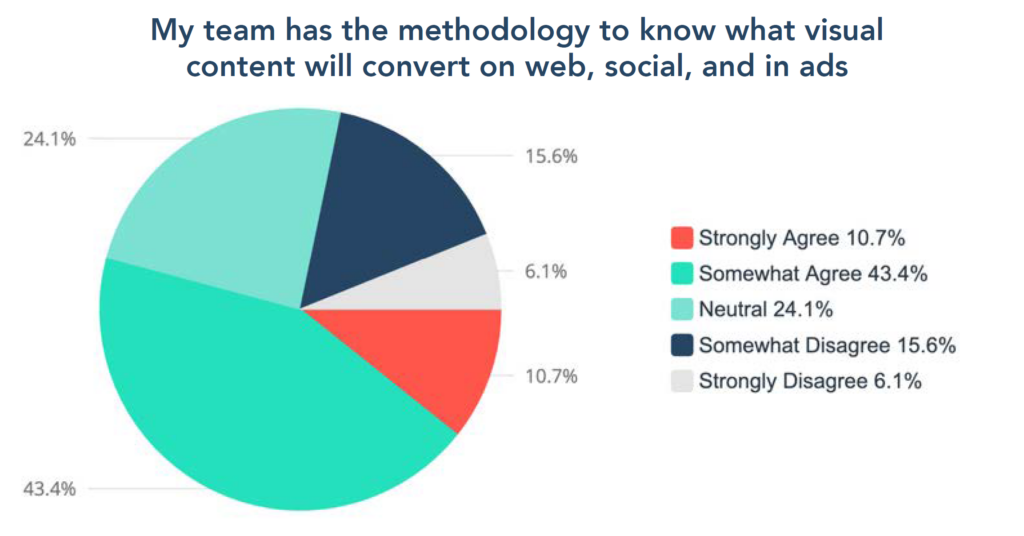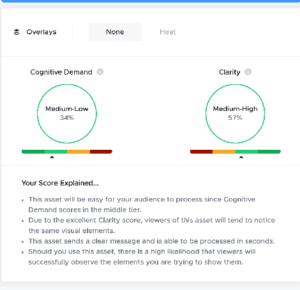How to prove marketing ROI is an age-old problem. Technology is supposed to make attribution easier, but for many professionals, choosing the right tool or technique to make the jobs easier is challenging. The complexity of proving ROI grows as a marketing organization becomes more robust. Prospects can enter a funnel from almost countless sources, and being able to map that journey is a battle unto itself.
Don’t let the challenge of attribution make proving return on investment (ROI) an unsolved mystery. In our 2023 State of User-Generated Content Report, we found out just how many marketers have left ROI a mystery. Those who are willing to invest in the tools and the time have a competitive edge over others.
The Statistics Behind ROI
Melanie Gaboriault, Global Head of Corporate Communications at Hootsuite, says it best, “Social is a fast-evolving space, and teams need to be given the license to be nimble, to test and iterate tactics, but never lose sight of the objectives.”
54.17% of marketers feel their team has the methodology to know what visual content will convert across marketing channels.

Yet only 18.2% of marketers always measure the performance of their content across marketing channels. This leaves 81.8% of marketers admitting they could do a better job at tracking content ROI.
What holds marketers back from measuring performance across every channel? Is it a lack of resources, time, or knowledge?
By investing in performance measurement and tracking, marketers can gain valuable insights into the effectiveness of their content and make more informed decisions about their strategies.
The journey to prove marketing ROI begins with sensible steps. Here are a few ways marketers can start prioritizing ROI so they can confidently put money toward their content marketing efforts.
Easy to Implement Strategies to Improve and Track ROI
Content ROI reporting requires two focuses. Focus #1 is improvement. It’s knowing what to post in the first place so that you can get an ROI. Focus #2 is tracking. Once you start posting, you’ll need to know how your audience and buyers feel about your content. Then, you work your way back to improving, tracking, improving, tracking, etc.
Improve ROI through Attention Scoring
Improving ROI doesn’t come from posting and hoping your content performs. Optimize your content for maximum attention through insights that grab attention and inspire action. Content creation tools can make this difficult since there is a myriad of variations and templates that can endlessly iterate any single piece of content.
Using user-generated content, influencer content, and creator content allows you to use the authentic voice of your customers. But how can you know which piece of content and creative will perform best?
An Attention Score gives you a look behind the eyes of your audience to visualize how content will be perceived before you publish.
Curious about which image works best? Or if one of your CTAs will outperform the other?
The technology behind this is our unique Eye Tracker technology that creates a dynamic heatmap. The heatmap shows you the areas of your content that are visually appealing before you publish. Inside TINT’s Attention Score is Cognitive and Clarity scores that help you understand how your visual content is understood and perceived by the viewer.


Here’s how to use TINT’s Attention Score:
- Select existing or upload new visual content to UGC Studio.
- Analyze Cognition, Saliency, and Eye Tracker heat map results to identify key attention spots.
- Make edits like adding text, stickers, and Calls-To-Actions to content directly in UGC Studio to maximize the Attention Score.
- Publish content optimized for Attention Score across any and all channels using native publishing features or by pushing the content into a marketing integration like Hootsuite, Hubspot, or Mailchimp.
After posting, use TINT to track mentions and replies to keep the feedback loop open.
Track ROI through Customer Sentiment
Maybe engagement is down? People are still viewing content, but their desire to like or comment on posts has dwindled. This makes it tough to understand the true ROI of your content marketing. That’s why the ROI of your latest campaign is more than just impressions, engagement, and conversions.
It can also be found in the way your buyers are talking about your brand online.
Imagine having the choice between a large audience speaking neutrally about your product vs. a small devoted audience speaking positively about your product. Most brands would want their target audience to be involved in smaller, positive conversations rather than the opposite.
Consider Tarte Cosmetics. They sponsored an influencer trip to Dubai with some of the most trendy lifestyle TikTok creators. Of course, the influencers did their part by posting about the trip. But, Tarte’s audience also started posting about the trip.
TikTok was flooded with short-form videos of other creators using Tarte products and asking for an invite to the next event as well as people breaking down the back-end logistics of the trip. This is customer sentiment in action.
@sarajmccord #alixearle #tarte ♬ Mastermind – Taylor Swift
Tarte can see the ROI of their campaign through the amount of user-generated content coming their way. They can automate the process of collecting and organizing this UGC to better understand their buyers and how they can create another viral moment in the future.
ROI: Decoded?
ROI may not be entirely decoded (attribution STILL has a lot of growing to do), but using tools and techniques like Attention Score and customer sentiment analysis is an ideal starting point. This can lead to a better understanding of which content will perform best and how to optimize future content based on audience and buyer feedback.
More focus on ROI is just one of 7 marketing trends we discovered in our 2023 State of User-Generated Content Report. In 2021, we followed up our UGC prediction with a rise in UGC creation and the new roles that would support it. Cue the newest (outsourced) role in content marketing – UGC Creators. In 2022, we saw that slashed marketing budgets and UGC were coming together to create small yet powerful marketing teams.
In 2023, we’re predicting more than just a priority on analyzing content ROI. We also see less static content and more video and audio content, and social media as a search engine on the horizon. Get free access to our 2023 State of User-Generated Content Report for more statistics and insights into these 7 marketing themes.




